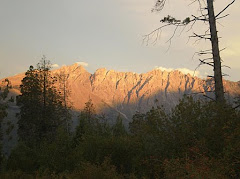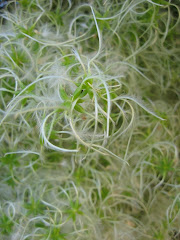 We set up in the kitchen, prepared for a Bolivian-American-French feast (we met a nice French guy, Sebastian, who´s traveling solo, so we adopted him.) When suddenly, 8 Koreans stroll in with 90 bags of groceries and a much more efficient cooking system than ours. We enjoyed a few bites of their spicy food, took a few shots of Korean liquor and got down to business. If anyone knows Lori´s and my experience with cooking, you know this is a recipe for disaster :) Well, kinda.
We set up in the kitchen, prepared for a Bolivian-American-French feast (we met a nice French guy, Sebastian, who´s traveling solo, so we adopted him.) When suddenly, 8 Koreans stroll in with 90 bags of groceries and a much more efficient cooking system than ours. We enjoyed a few bites of their spicy food, took a few shots of Korean liquor and got down to business. If anyone knows Lori´s and my experience with cooking, you know this is a recipe for disaster :) Well, kinda. Our feast was to consist of chicken cutlets, a sweet potato dish, green bean casserole, apple crisp, tomato-basil-mozzarella-vinegar things (you know what I mean) and shrimp. We would have a feast!! (And really, with a few modifications, it was excellent. We´re still eating it day 2 and all is good!)
Our feast was to consist of chicken cutlets, a sweet potato dish, green bean casserole, apple crisp, tomato-basil-mozzarella-vinegar things (you know what I mean) and shrimp. We would have a feast!! (And really, with a few modifications, it was excellent. We´re still eating it day 2 and all is good!) The only big problem is that necessary ingredients in the states, don´t really exist here. We started by asking for a super market. The nice woman at our hostal told us, go here, turn here, one block, up here and you´ll find a super market. Ok, great. Only it wasn´t a super market, it was a super street market. The ol´choose your chicken from the unplucked ones hanging by their feet and nothing is refrigerated super market. I mean, it was super big and super Bolivian. But not a super market. We bought what we could find; mozzarella cheese, vegetables, milk stuff and avoided the hanging chickens with hopes of finding a real super market (Super Stop n Shop, where are you??)
The only big problem is that necessary ingredients in the states, don´t really exist here. We started by asking for a super market. The nice woman at our hostal told us, go here, turn here, one block, up here and you´ll find a super market. Ok, great. Only it wasn´t a super market, it was a super street market. The ol´choose your chicken from the unplucked ones hanging by their feet and nothing is refrigerated super market. I mean, it was super big and super Bolivian. But not a super market. We bought what we could find; mozzarella cheese, vegetables, milk stuff and avoided the hanging chickens with hopes of finding a real super market (Super Stop n Shop, where are you??) Thankfully, the next day we had only a few more things to buy and we found a real super market. The super market was, by far, our best Christmas present (though, if need be, Lori did volunteer to de-feather the chicken :) As amazing as our new found super market was, we quickly noted we would not be celebrating our feast with the necessary US ingredients. Apple pie filling (for the apple crisp) was replaced with regular apples to be peeled (does a peeler exist in this country or only butter knives?) Pecans (the topping for the sweet potato dish) were replaced with oatmeal. Brown sugar (also for the sweet potatoes) was replaced with unrefined white sugar (Is it really the same?) 4 cans of French Cut green beans (for the green bean casserole) were replaced with 2 huge bags of fresh green beans, which for a moment caused us to panic, thinking we had bought 2 huge bags of pea pods. (While cooking the green beans, I asked our French friend if he would cut them for us. I mean, the "French Cut" must come naturally to him? I bet there´s a whole factory of Frenchmen cutting beans in the states.)
Thankfully, the next day we had only a few more things to buy and we found a real super market. The super market was, by far, our best Christmas present (though, if need be, Lori did volunteer to de-feather the chicken :) As amazing as our new found super market was, we quickly noted we would not be celebrating our feast with the necessary US ingredients. Apple pie filling (for the apple crisp) was replaced with regular apples to be peeled (does a peeler exist in this country or only butter knives?) Pecans (the topping for the sweet potato dish) were replaced with oatmeal. Brown sugar (also for the sweet potatoes) was replaced with unrefined white sugar (Is it really the same?) 4 cans of French Cut green beans (for the green bean casserole) were replaced with 2 huge bags of fresh green beans, which for a moment caused us to panic, thinking we had bought 2 huge bags of pea pods. (While cooking the green beans, I asked our French friend if he would cut them for us. I mean, the "French Cut" must come naturally to him? I bet there´s a whole factory of Frenchmen cutting beans in the states.) Pre-church Christmas Eve, we chowed down on some delicious shrimp prepared by Sebastian. They were great! After a little partying with our new Korean friends, we were off to midnight mass at the big cathedral in La Paz. The only unique thing we noted here was that everyone had baby Jesus dolls that they brought with them to church. We had forgotten ours. There was also one blubbering drunk man harassing the poor people sitting in our row of seats. "Christmas is about love." Thanks for the wisdom!
Pre-church Christmas Eve, we chowed down on some delicious shrimp prepared by Sebastian. They were great! After a little partying with our new Korean friends, we were off to midnight mass at the big cathedral in La Paz. The only unique thing we noted here was that everyone had baby Jesus dolls that they brought with them to church. We had forgotten ours. There was also one blubbering drunk man harassing the poor people sitting in our row of seats. "Christmas is about love." Thanks for the wisdom! After church, we celebrated with a sort of dry, apple crisp. The next morning, we set up shop again to start french cutting the beans and finish up the chicken cutlets, sweet potato dish, green bean casserole and tomato-basil-mozzarella-vinegar things. Honestly, everything was going well until we discovered the mozzarella cheese we had bought at the super street market, had probably been sitting in the sun for the past 2 years. What´s chicken cutlets and tomato-basil-mozzarella without mozzarella!!
After church, we celebrated with a sort of dry, apple crisp. The next morning, we set up shop again to start french cutting the beans and finish up the chicken cutlets, sweet potato dish, green bean casserole and tomato-basil-mozzarella-vinegar things. Honestly, everything was going well until we discovered the mozzarella cheese we had bought at the super street market, had probably been sitting in the sun for the past 2 years. What´s chicken cutlets and tomato-basil-mozzarella without mozzarella!! We survived our cheese less Christmas with the rest of our improvised successes, exchanged gifts, took naps... and of course, made the much needed phone call home to hear all about the family festivities in RI. Thankfully, we celebrated our first Christmas away from home with the one person who practically is home. Not many people have this unique opportunity. Being far from home, one can´t ask for anything better.
We survived our cheese less Christmas with the rest of our improvised successes, exchanged gifts, took naps... and of course, made the much needed phone call home to hear all about the family festivities in RI. Thankfully, we celebrated our first Christmas away from home with the one person who practically is home. Not many people have this unique opportunity. Being far from home, one can´t ask for anything better.We really missed our families. Next year, waking up Christmas morning and opening our presents surrounded by our families will be that much more special.























































